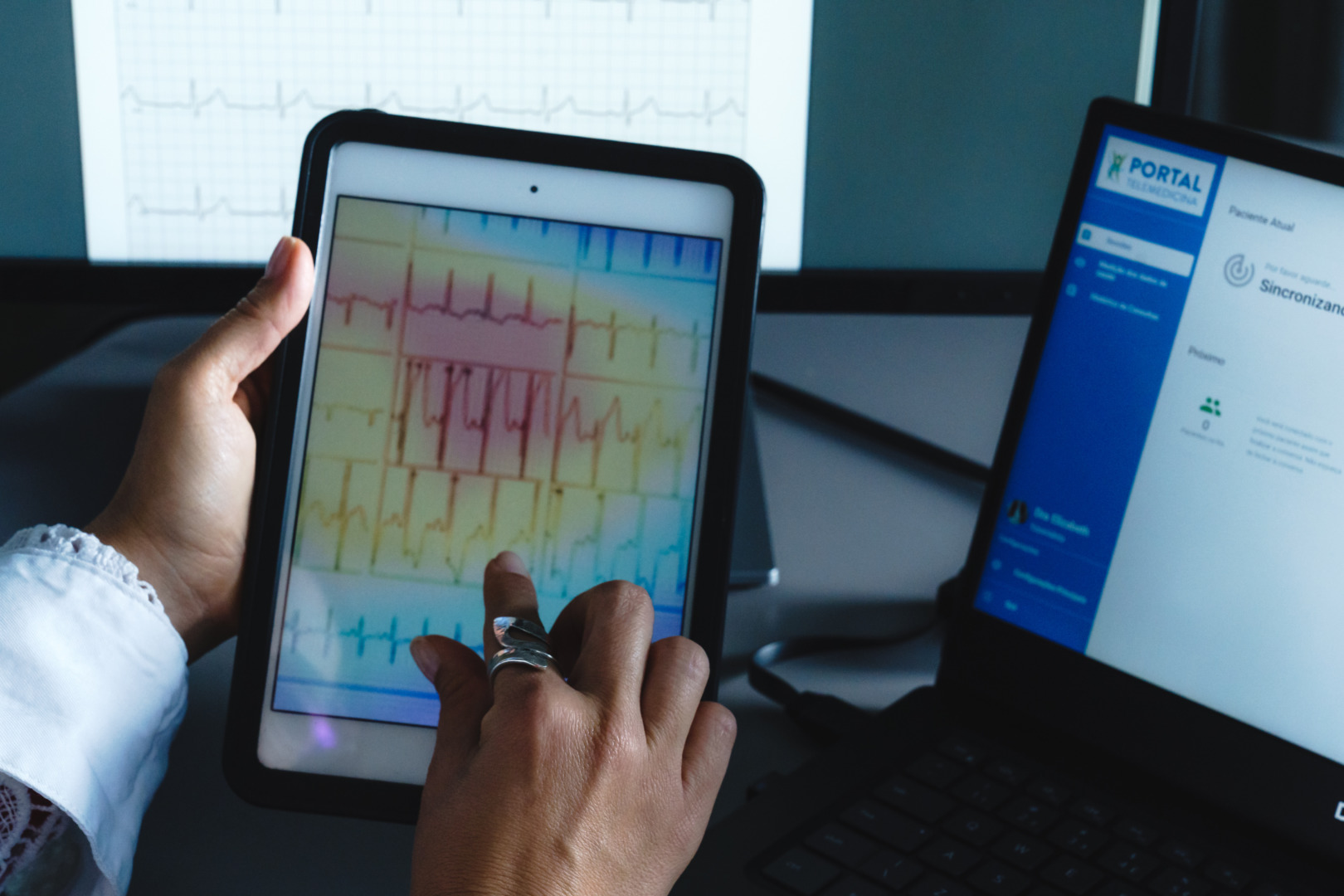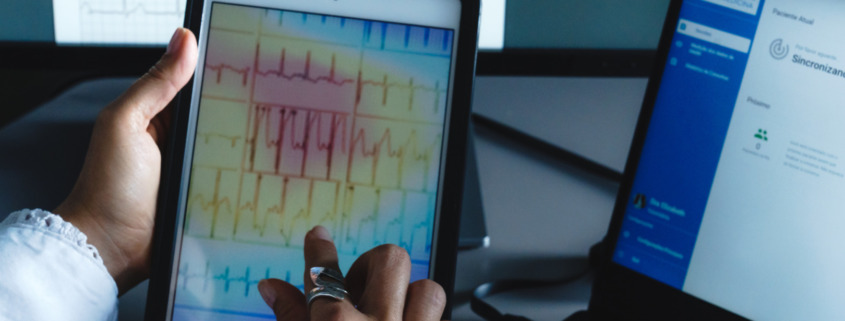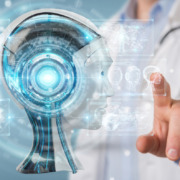AI to speed up urgent cardiological exam reports
Last Updated on 10 de September de 2024 by Redação
Cardiovascular diseases are the main cause of death in Brazil¹, accounting for approximately 380,000 deaths per year in the country. Most heart problems could be solved or alleviated with early treatment, which is why medical follow-up and cardiological examinations are so important.
In this context, technology comes in as a great facilitator for health professionals, helping with diagnoses and treatments.
A good example is research on artificial intelligence (AI) in cardiology, which has been growing year by year: from 2001 to 2019, the number of articles involving AI and cardiology jumped from 1 to 209 on the PubMed portal.²
The application of AI to cardiological exams, however, is not restricted to academia. According to a study by Distrito Dataminer, in Brazil alone there are 702 startups focused on AI, with the health and biotechnology area concentrating the largest number of them, with 12.5%.³
Solutions that use artificial intelligence are already available on the market for use in clinics and hospitals and the options are only increasing. The digital transformation in health has been on the rise for a few years and was driven by the scenario imposed by Covid-19 in 2020. Anyone who wants to stay up-to-date and competitive in the health market cannot close their eyes to this reality.

Artificial Intelligence: more agility in heart tests
One of the applications of AI for heart tests that has already been used is the prioritization of electrocardiogram reports according to the urgency of the case. This type of solution may even seem distant from the daily life of Brazilian healthcare, but the truth is that our country already develops and uses cutting-edge technologies.
A successful example is in the city of Tarumã, in the interior of São Paulo, with implementation by the Unified Health System (SUS). With a telemedicine solution for electrocardiogram reports from Portal Telemedicina, the city saw its death rate from acute myocardial infarction drop by 45%.⁴ The telereports reach the doctors in Tarumã within 10 minutes, significantly speeding up the service.
Myocardial infarction is among the most deadly cardiovascular diseases. According to a survey carried out by the Federal University of Juiz de Fora (UFJF), the problem is more serious in the North and Northeast regions of Brazil, precisely where the concentration of specialist doctors is lower.⁵ In this scenario, telemedicine and AI are even more relevant.
Another artificial intelligence solution for cardiology is being researched and tested by the Aterolab Laboratory, of the Medical Sciences School (FCM) at Unicamp.⁶ There, an algorithm was developed to analyze data from medical records of patients seen in public and private hospitals. The research was presented at conferences in Brazil and Denmark, where it took first place as the best paper.
In England, a study analyzed, with the help of AI, images of routine exams, with the main objective of finding a way to measure the blood flow of patients, eliminating invasive procedures. With this method, scientists were able to predict heart attack, heart failure and even death, among the frames studied.
AI can help healthcare in different ways
Artificial intelligence can have applications in the most diverse areas of health, from simple and repetitive activities, such as scheduling appointments, to aiding in the prevention, diagnosis, monitoring and treatment of serious illnesses.
As machines have the ability to analyze large amounts of data at a speed unthinkable for any human being, they can be developed and programmed to assist in all levels of health care (primary, secondary or tertiary).
In addition to the application in cardiological examinations, there are examples of the use of AI for the prevention and diagnosis of cancer, Alzheimer’s disease and even facilitating the identification of cases of Covid-19.
In the fight against Covid-19, an algorithm was developed to detect signs of coronavirus in X-rays and CT scans and prioritize serious cases. It scans the exams, evaluating changes and signaling suspected cases to doctors within 10 minutes.
It is important to point out, however, that no algorithm will do the work alone and the doctor will not be replaced. Artificial intelligence assists health professionals in their activities, accelerating processes, but does not issue any reports or diagnoses. This type of action is even prohibited by the National Health Surveillance Agency (Anvisa). Legally, only physicians are qualified to report.
Some of the benefits
Doctors will not be replaced by machines, but those who move well between technologies, taking the best advantage that each one can offer, will certainly gradually become the most sought-after and best-paid professionals.
Artificial intelligence has numerous advantages, both for those who serve and for patients. Objections to adopting them often occur due to lack of knowledge on the part of professionals, since AI is still not the object of study for everyone who graduates in Medicine.
Among the main benefits of artificial intelligence we can mention:
– Automation of repetitive tasks: so the doctor can focus on patient care;
– Identification of patterns and aid in predictive analysis: from the evaluation of a large volume of data from different patients or the monitoring of various indicators and symptoms of a single person, the AI is able to identify patterns, including pathologies even before they manifest themselves.⁷ With this, the doctor is empowered to use the machine to ensure greater accuracy in reports and diagnoses and initiate early treatments that can offer more quality of life to the patient;
– Prioritization of severe cases: the identification of patterns and what is outside the normal pattern in exams, such as in the areas of cardiology or radiology mentioned above, also allows the AI to prioritize serious cases of various diseases in the doctor’s queue;
– Optimization of resources: with the crossing of data made by AI between service needs versus available resources, it is possible to make better allocations, such as in the use and distribution of beds;
– Assistance in surgeries: intelligent robots can analyze preoperative assessments to guide the doctor’s movements during surgery, reducing a patient’s hospital stay by up to 20%.⁸
References
⁴ Tarumã case study: Telemedicine and Artificial Intelligence applied for reducing Cardiovascular Diseases mortality and Health Cost Optimization
⁵ Heart attack mortality grows in the North and Northeast of Brazil
⁷ BBC
⁸ CNBC





